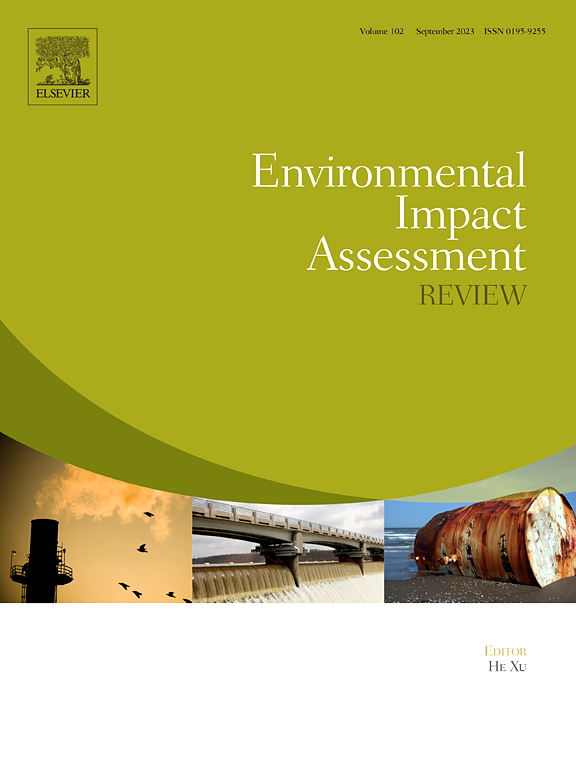评估用于制造印刷电路板的3D打印工艺的环境和经济性能
IF 9.8
1区 社会学
Q1 ENVIRONMENTAL STUDIES
引用次数: 0
摘要
尽管在开发3D(三维)印刷工艺以生产印刷电路板(pcb)方面已经投入了大量的努力,但这种工艺的环境和经济方面仍然没有得到充分的研究。为了弥补这一知识差距,我们研究了四种3D打印工艺(即熔融沉积建模[FDM],直接墨水书写[DIW],喷墨打印[IJP]和气溶胶喷射打印[AJP])在PCB生产中的环境和经济性能,采用前生命周期评估(LCA)方法和传统的生命周期成本计算(LCC)方法,并与最广泛使用的PCB制造工艺(即减法工艺)进行了比较。我们的研究结果表明,总体而言,四种3D打印工艺的环境性能优于减法工艺,并且由于较低的能源和材料消耗,在3D打印工艺的预处理阶段产生了实质性的环境效益。然而,在二氧化碳排放方面,只有FDM是环保的,因为该工艺的碳排放量不到其他四种工艺的40%,而其他3D打印工艺的二氧化碳排放量比减法工艺多。此外,在生命周期成本方面,只有FDM在经济上是可行的,因为其生命周期成本仅低于其他四种工艺的20%。同样,由于银油墨和AJP打印机的高成本,DIW、IJP和AJP的生命周期成本要比基线的成本高得多。灵敏度分析强调了电路密度和厚度对工艺整体环境和经济性能的影响。此外,根据观察结果,我们提供了实际意义和研究视角,以促进3D打印在电子制造业中的应用。本文章由计算机程序翻译,如有差异,请以英文原文为准。

Assessing the environmental and economic performances of 3D printing processes for manufacturing printed circuit boards
Though extensive efforts have been invested in developing 3D (3-dimensional) printing processes to produce printed circuit boards (PCBs), the environmental and economic aspects of such processes remain underexamined. To bridge this knowledge gap, we investigate the environmental and economic performances of four 3D printing processes (i.e., fused deposition modeling [FDM], direct ink writing [DIW], inkjet printing [IJP], and aerosol-jet printing [AJP]) for PCB production employing an ex-ante life cycle assessment (LCA) method and a traditional life cycle costing (LCC) method, in comparison with the most widely-used PCB manufacturing process, i.e., the subtractive process. Our findings indicate that in general, the environmental performance of the four 3D printing processes is superior to that of the subtractive process, and substantial environmental benefits occur in the preprocessing stage of the 3D printing processes due to lower energy and material consumptions. However, in terms of carbon dioxide (CO2) emission, only FDM is environmentally beneficial, as the carbon emission of this process is less than 40 % of those of the other four processes, while the other 3D printing processes emit more CO2 than the subtractive process. Additionally, only FDM is economically feasible to replace the subtractive process in terms of life cycle cost, as its life cycle cost is merely less than 20 % of those of the other four processes. Again, the life cycle costs of DIW, IJP, and AJP are much greater than those of the baseline due to the high costs of silver inks and AJP printers. The sensitivity analysis underscores the influence of circuit density and thickness on the processes' overall environmental and economic performances. Furthermore, based on the observations, we offer practical implications and research perspectives to facilitate the adoption of 3D printing in electronics manufacturing.
求助全文
通过发布文献求助,成功后即可免费获取论文全文。
去求助
来源期刊

Environmental Impact Assessment Review
ENVIRONMENTAL STUDIES-
CiteScore
12.60
自引率
10.10%
发文量
200
审稿时长
33 days
期刊介绍:
Environmental Impact Assessment Review is an interdisciplinary journal that serves a global audience of practitioners, policymakers, and academics involved in assessing the environmental impact of policies, projects, processes, and products. The journal focuses on innovative theory and practice in environmental impact assessment (EIA). Papers are expected to present innovative ideas, be topical, and coherent. The journal emphasizes concepts, methods, techniques, approaches, and systems related to EIA theory and practice.
 求助内容:
求助内容: 应助结果提醒方式:
应助结果提醒方式:


